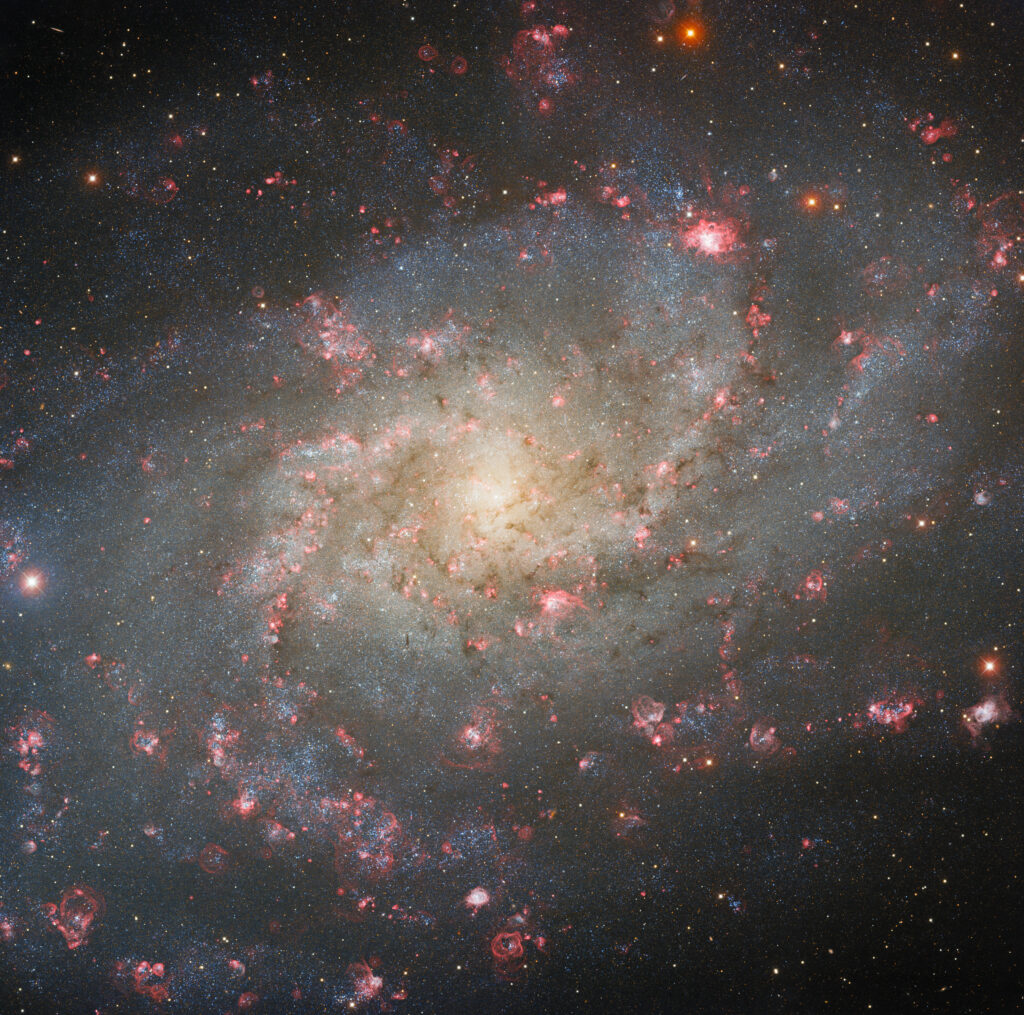The presented image was obtained by the Nicholas Mayall 4-meter telescope installed on the territory of the Kitt Peak Observatory. The image shows the Triangulum Galaxy — the most distant object visible to the naked eye in the Universe.

What is the most distant object from Earth that can be seen with the naked eye? Usually, the Andromeda galaxy, which is located at a distance of 2.5 million light-years from the Milky Way, is called as an answer to this question. However, not quite so. Under ideal weather conditions, an observer with good eyesight is able to make out a dim speck in the constellation Triangulum. It corresponds to the spiral galaxy of the same name, located at a distance of 2.7 million light-years from the Milky Way.
The Triangulum Galaxy is the third largest member of the Local Cluster Group, which includes our Milky Way and its neighbors. Its diameter is about 60 thousand light-years, which is almost two times smaller than the diameter of our galaxy. According to astronomers, the galaxy consists of about 40 billion luminaries. This is an order of magnitude smaller than the stellar population of the Milky Way. At the same time, star clusters in the Triangulum galaxy are distributed more evenly than in our galaxy. In addition, it is rich in regions of active star formation.
The Triangulum galaxy is quite closely related to the Andromeda galaxy. There is an assumption that it is its companion. But not all astronomers with a similar interpretation. According to an alternative hypothesis, they are independent objects that have experienced close proximity in the past.
The fate of the Triangulum galaxy is also a matter of debate. Recent data suggest that in about 2.5 billion years it may collide with the Andromeda galaxy, which will give rise to a single lenticular galaxy. In about two billion years, this object will begin to merge with the Milky Way, which will lead to the birth of an even larger galaxy.
According to https://www.noirlab.edu
Follow us on Twitter to get the most interesting space news in time
https://twitter.com/ust_magazine

